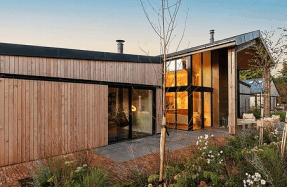
Woodburning stoves are increasingly popular with homeowners due to the comfort they provide and the characterful focal point they can bring to a home. Today’s woodburners are highly efficient and reduce the reliance on fossil fuels for domestic heating. Great for heating a single space, these stoves can also work well with other low-carbon heating solutions, such as heat pumps.
But opting for a woodburning stove requires careful thought. You will need to consider the rules regarding woodburners where you live, as well as the type of property you live in before you get into the finer details of the type and size of stove you want, the fuel supply, the maintenance requirements and, importantly, all the costs involved.
SHOULD I GET A WOODBURNER?
There are several factors that will influence whether or not a woodburning stove is the right choice for you and your home, so it pays to do your homework.
If you live in a town or city, do check to see if you’re within a Smoke Control Area; you can find out by contacting your local authority or visiting its website. If you do find you’re in a Smoke Control Area, you’ll only be able to burn DEFRA-approved smokeless fuels (such as anthracite), which doesn’t include wood.
Alternatively, if you do want to burn wood or non-exempt fuels, you’ll need to specify a DEFRA-exempt stove, but you’ll find that most manufacturers and suppliers are quick to mark out models with this stamp of approval.
BASIC REQUIREMENTS
For combustion to take place, stoves need air and to obtain a sufficient air supply, the air within the room needs to be replenished. In older, draughty homes, and particularly those with large rooms, this doesn’t tend to be an issue. However, in modern, well-insulated, airtight self-built homes, this is not the case. The situation is further complicated by mechanical ventilation systems. Room-sealed stoves with a direct air






